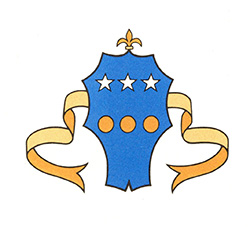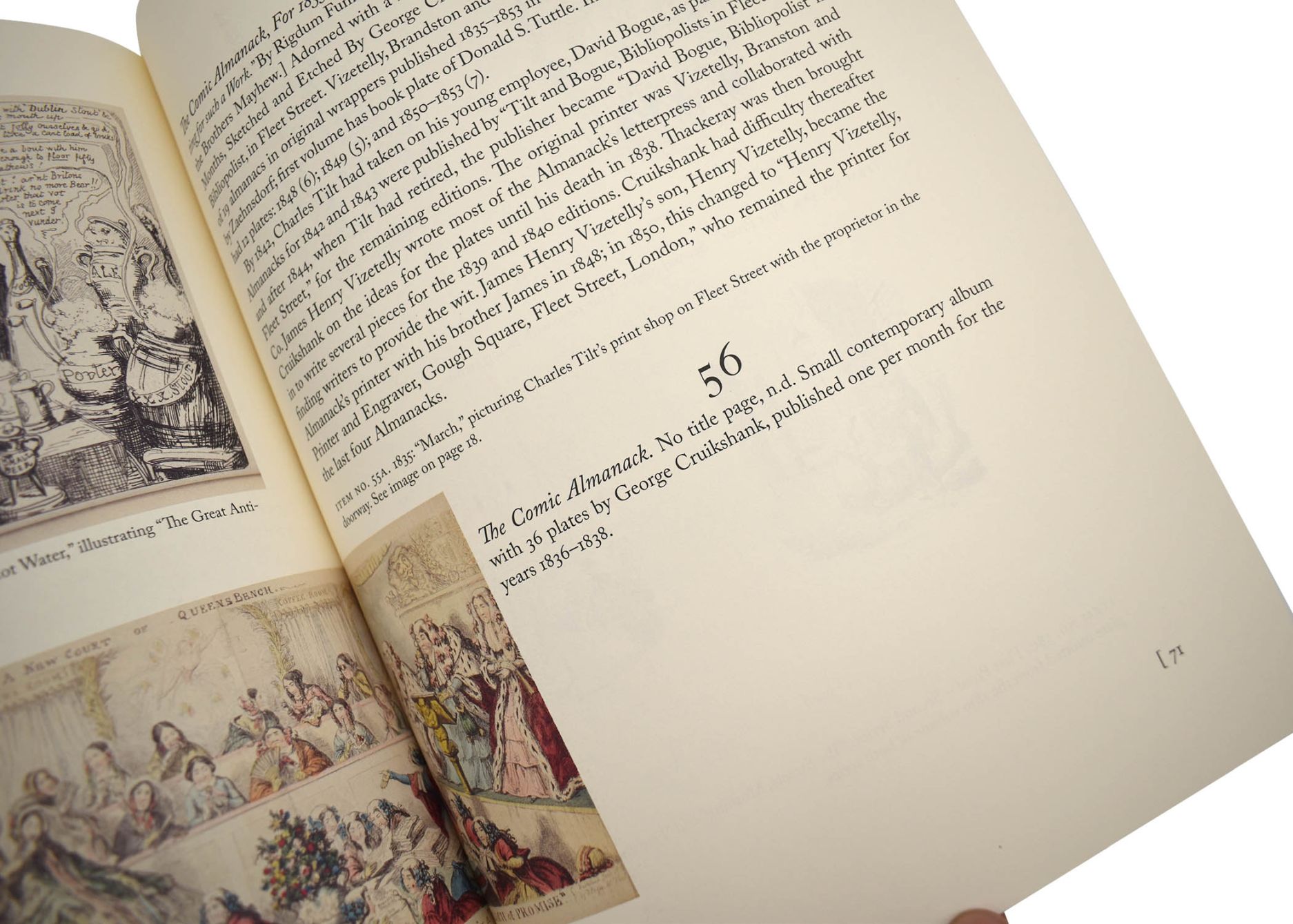9781605830957
Distributed for The Grolier Club
"The Great George"
Cruikshank and London’s Graphic Humorists (1800–1850)
A compact biography of one of nineteenth-century England’s most renowned illustrators.
George Cruikshank (1792–1878) was a key transitional figure in the changing world of nineteenth-century London’s graphic humor. He carried his eighteenth-century-trained wit from the field of political satire during the Regency years into the Victorian era of journals and books. His witty drawings of boisterous London streets in 1820–1836 made him a household name, and in 1836, his masterful etchings were key to the positive reception of Charles Dickens’s first novel.
Illustrated throughout by his one-of-a-kind drawings, “The Great George” traces Cruikshank’s career from his ascent, by 1820, as the preeminent political satirist to the end of his career. During the 1840s and 50s, with the rising popularity of Dickens, the arrival of Punch, and his adoption of the temperance movement as his work’s focus, Cruikshank was eventually eclipsed by new generations of artists. Using as her launchpad the argument that drawing with humor takes both great draftsmanship and a highly perceptive sense of humanity, Josephine Lea Iselin not only details the trajectory of Cruikshank’s art but also provides valuable context for his work, placing his drawings alongside pieces from his artistic predecessors and principal contemporaries.
George Cruikshank (1792–1878) was a key transitional figure in the changing world of nineteenth-century London’s graphic humor. He carried his eighteenth-century-trained wit from the field of political satire during the Regency years into the Victorian era of journals and books. His witty drawings of boisterous London streets in 1820–1836 made him a household name, and in 1836, his masterful etchings were key to the positive reception of Charles Dickens’s first novel.
Illustrated throughout by his one-of-a-kind drawings, “The Great George” traces Cruikshank’s career from his ascent, by 1820, as the preeminent political satirist to the end of his career. During the 1840s and 50s, with the rising popularity of Dickens, the arrival of Punch, and his adoption of the temperance movement as his work’s focus, Cruikshank was eventually eclipsed by new generations of artists. Using as her launchpad the argument that drawing with humor takes both great draftsmanship and a highly perceptive sense of humanity, Josephine Lea Iselin not only details the trajectory of Cruikshank’s art but also provides valuable context for his work, placing his drawings alongside pieces from his artistic predecessors and principal contemporaries.
Table of Contents
I. Introduction
II. A Brief Outline of a Long Life (1792–1878)
1792–1811: Beginnings: George’s Education in the Art of Humor
1811–1820: Young George as Political Satirist
1821–1835: When Humorous Etching Was King
1835–1840: The Arrival of Mr. Dickens
Sketches by Boz
The Pickwick Papers
Oliver Twist
1841–1847: Cruikshank’s Disputes with Bentley and Ainsworth;
His Rejection of Offers from Messrs. Dickens and Punch
1847–1850: The Road to Temperance
1851–1878: The Second Epoch
Coda to the First Epoch: 1851: or The Adventures of Mr. and
Mrs. Sandboys and Family
Preface to the Second Epoch: George Cruikshank’s Fairy Library
Epilogue
III. Prints, Original Drawings, and Documents
Item Nos. 1–13: Beginnings: George’s Education in the Art of Humor
Item Nos. 14–28: Young George as Political Satirist
Item Nos. 29–56: When Humorous Etching Was King
Item Nos. 57–69: The Arrival of Mr. Dickens
Item Nos. 70–75: Cruikshank’s Disputes with Bentley and Ainsworth;
His Rejection of Offers from Messrs. Dickens and Punch
Item Nos. 76–80: The Road to Temperance
Item Nos. 81–93: The Second Epoch
Acknowledgments
Bibliography
II. A Brief Outline of a Long Life (1792–1878)
1792–1811: Beginnings: George’s Education in the Art of Humor
1811–1820: Young George as Political Satirist
1821–1835: When Humorous Etching Was King
1835–1840: The Arrival of Mr. Dickens
Sketches by Boz
The Pickwick Papers
Oliver Twist
1841–1847: Cruikshank’s Disputes with Bentley and Ainsworth;
His Rejection of Offers from Messrs. Dickens and Punch
1847–1850: The Road to Temperance
1851–1878: The Second Epoch
Coda to the First Epoch: 1851: or The Adventures of Mr. and
Mrs. Sandboys and Family
Preface to the Second Epoch: George Cruikshank’s Fairy Library
Epilogue
III. Prints, Original Drawings, and Documents
Item Nos. 1–13: Beginnings: George’s Education in the Art of Humor
Item Nos. 14–28: Young George as Political Satirist
Item Nos. 29–56: When Humorous Etching Was King
Item Nos. 57–69: The Arrival of Mr. Dickens
Item Nos. 70–75: Cruikshank’s Disputes with Bentley and Ainsworth;
His Rejection of Offers from Messrs. Dickens and Punch
Item Nos. 76–80: The Road to Temperance
Item Nos. 81–93: The Second Epoch
Acknowledgments
Bibliography




